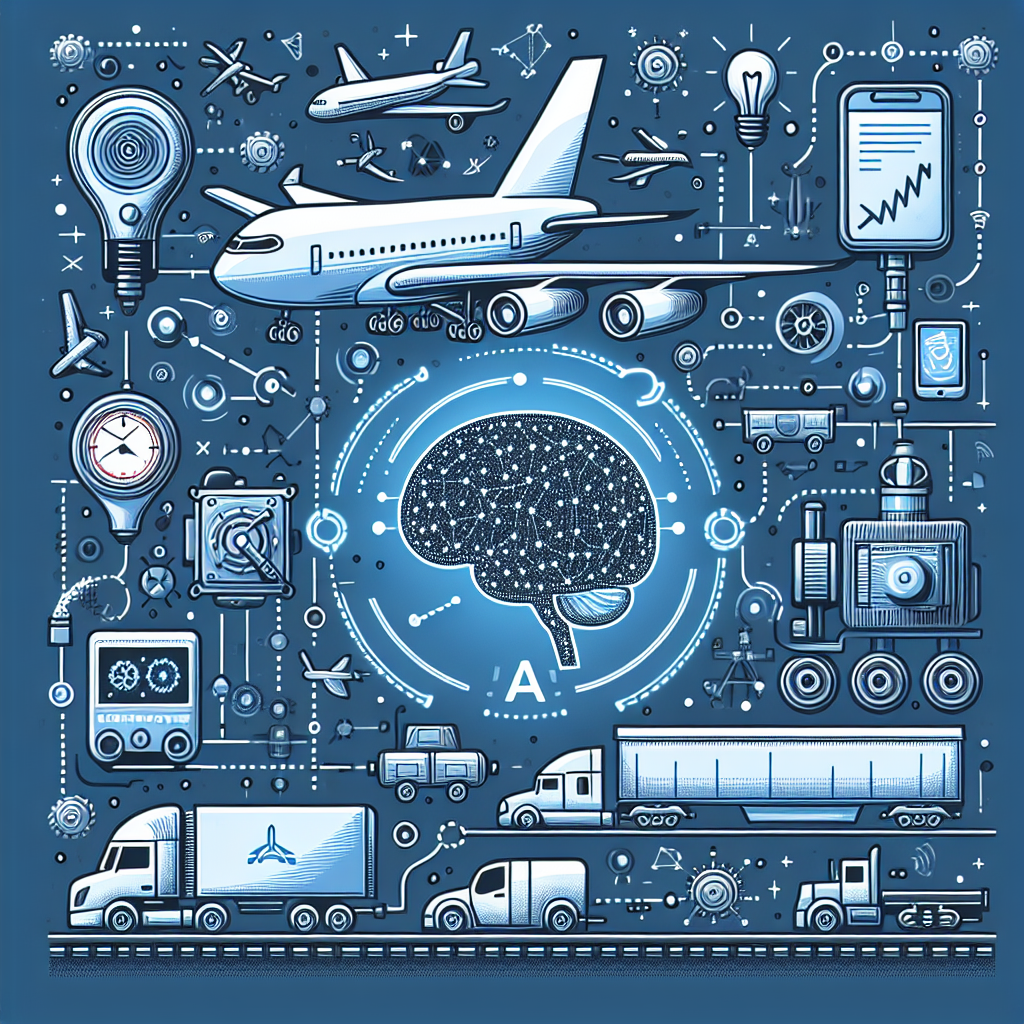Artificial Intelligence (AI) is revolutionizing various industries, and one area where it is making a significant impact is in predictive maintenance for transportation vehicles. Predictive maintenance uses AI algorithms to analyze data from sensors and other sources to predict when maintenance is needed before a breakdown occurs. This proactive approach can save time and money by preventing costly repairs and avoiding unexpected downtime. In this article, we will explore the applications of AI in predictive maintenance for transportation vehicles and how it is transforming the industry.
Applications of AI in Predictive Maintenance for Transportation Vehicles
1. Condition Monitoring: AI algorithms can analyze data from sensors on transportation vehicles to monitor their condition in real-time. This includes monitoring various components such as engines, brakes, and tires to detect abnormalities or signs of wear and tear. By continuously monitoring the condition of vehicles, AI can predict when maintenance is needed and schedule it before a breakdown occurs.
2. Predictive Analytics: AI can use historical data and machine learning algorithms to predict when maintenance is likely to be required based on the vehicle’s usage patterns. By analyzing data such as mileage, fuel consumption, and driving behavior, AI can identify trends and patterns that indicate when components are reaching the end of their lifespan. This allows maintenance to be scheduled at the most optimal time, reducing downtime and minimizing costs.
3. Fault Detection: AI can detect faults in transportation vehicles by analyzing data from sensors and other sources. By detecting faults early, maintenance can be scheduled before the issue becomes a major problem. AI algorithms can identify patterns or anomalies in the data that indicate a potential fault, allowing maintenance teams to address the issue before it leads to a breakdown.
4. Prognostics: AI can use predictive modeling to forecast the remaining useful life of components in transportation vehicles. By analyzing data on the condition of components and their historical performance, AI can predict when a component is likely to fail and recommend the best course of action. This proactive approach to maintenance can help transportation companies reduce costs and improve the reliability of their vehicles.
5. Fleet Management: AI can optimize the maintenance schedules of an entire fleet of transportation vehicles by analyzing data on each vehicle’s condition and usage patterns. By considering factors such as vehicle availability, maintenance costs, and downtime, AI algorithms can recommend the most cost-effective maintenance schedule for each vehicle in the fleet. This can help transportation companies improve the efficiency of their operations and reduce maintenance costs.
Benefits of AI in Predictive Maintenance for Transportation Vehicles
1. Reduced Downtime: By predicting when maintenance is needed, AI can help transportation companies schedule maintenance at the most optimal time, reducing downtime and minimizing disruptions to operations.
2. Cost Savings: Proactive maintenance can help transportation companies save money by preventing costly repairs and avoiding unexpected breakdowns. By optimizing maintenance schedules and identifying potential issues early, AI can help reduce maintenance costs and improve the overall efficiency of operations.
3. Improved Safety: By monitoring the condition of transportation vehicles in real-time, AI can help identify potential safety issues and prevent accidents before they occur. This proactive approach to maintenance can help ensure the safety of drivers and passengers.
4. Increased Efficiency: By optimizing maintenance schedules and reducing downtime, AI can help transportation companies improve the efficiency of their operations. By addressing maintenance issues before they become major problems, AI can help transportation companies maximize the uptime of their vehicles and improve overall performance.
5. Enhanced Customer Satisfaction: By ensuring that transportation vehicles are well-maintained and reliable, AI can help transportation companies deliver a better experience to customers. By reducing the risk of breakdowns and delays, AI can help transportation companies provide a more reliable and consistent service to their customers.
FAQs:
Q: How does AI predict when maintenance is needed for transportation vehicles?
A: AI uses machine learning algorithms to analyze data from sensors and other sources to identify patterns and anomalies that indicate when maintenance is likely to be required. By analyzing data such as mileage, fuel consumption, and driving behavior, AI can predict when components are reaching the end of their lifespan and recommend the best course of action.
Q: What are the benefits of using AI for predictive maintenance in transportation vehicles?
A: The benefits of using AI for predictive maintenance in transportation vehicles include reduced downtime, cost savings, improved safety, increased efficiency, and enhanced customer satisfaction. By predicting when maintenance is needed and scheduling it at the most optimal time, AI can help transportation companies save money, improve safety, and deliver a better experience to customers.
Q: How can transportation companies implement AI for predictive maintenance?
A: Transportation companies can implement AI for predictive maintenance by collecting data from sensors on their vehicles, using machine learning algorithms to analyze the data, and integrating AI into their maintenance processes. By investing in AI technology and training their maintenance teams on how to use it, transportation companies can improve the reliability and efficiency of their operations.
In conclusion, AI is transforming the transportation industry by revolutionizing predictive maintenance for vehicles. By using AI algorithms to analyze data from sensors and other sources, transportation companies can predict when maintenance is needed and schedule it at the most optimal time. This proactive approach to maintenance can help reduce downtime, save money, improve safety, and enhance customer satisfaction. As AI technology continues to advance, the applications of AI in predictive maintenance for transportation vehicles will only become more sophisticated and effective, driving further improvements in the industry.

